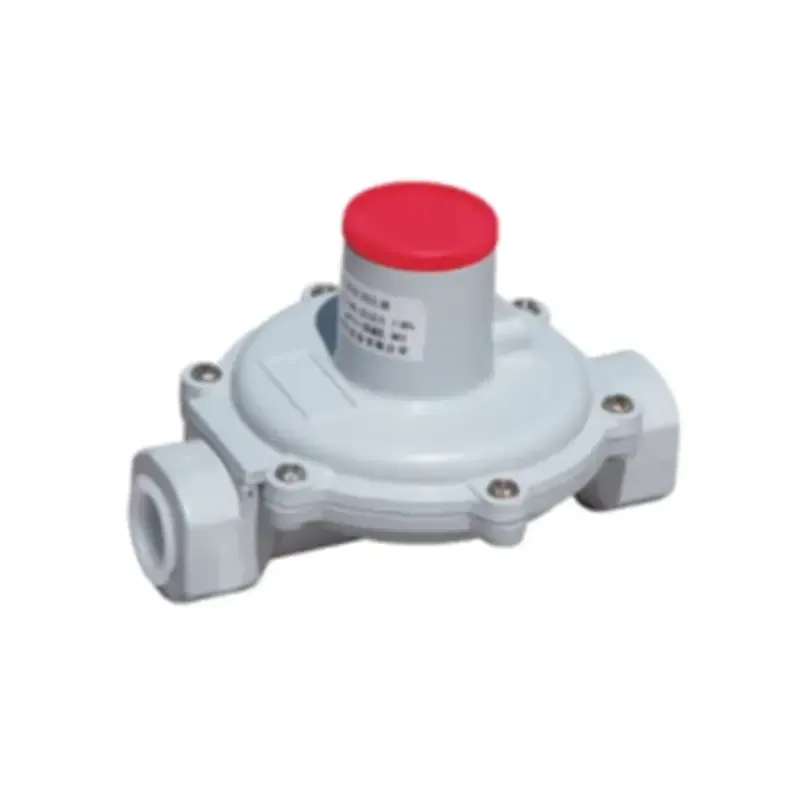
Dec . 11, 2024 05:27
Back to list
Understanding the Functionality and Applications of High Pressure Regulators in Various Industries
Understanding High-Pressure Regulators Essential Components in Pressure Management
High-pressure regulators are critical devices used to manage and control the pressure of gases and liquids in various applications, including industrial, commercial, and residential settings. These regulators ensure that the pressure is maintained at safe and desired levels, protecting equipment and ensuring efficient operation. This article delves into the functioning, types, applications, and significance of high-pressure regulators in today’s industrial landscape.
The Function of High-Pressure Regulators
A high-pressure regulator primarily serves to reduce the high inlet pressure of a gas or liquid to a lower, more manageable outlet pressure. This is crucial in applications where excessive pressure could be hazardous or could damage equipment. For instance, a typical high-pressure supply might come from a gas cylinder or a pressurized pipeline. The regulator carefully modulates this high pressure to prevent fluctuations that could lead to inefficiencies, safety hazards, or system failures.
High-pressure regulators operate based on a simple yet effective mechanism. They typically include a diaphragm or piston that responds to changes in pressure. When the upstream pressure exceeds the desired output, the regulator adjusts the flow of gas or liquid accordingly. Some models even include built-in relief valves to offer additional safety measures, releasing excess pressure if it exceeds predefined limits.
Types of High-Pressure Regulators
High-pressure regulators come in various types, each designed for specific applications and requirements.
1. Single-Stage Regulators These are used where quick response to pressure changes is necessary. They reduce the pressure from the source to the desired level in a single step. They are suitable for applications with relatively constant pressure requirements.
2. Two-Stage Regulators These provide a more stable pressure output, making them suitable for applications with varying demands. The first stage reduces the high inlet pressure, while the second stage precisely controls the outlet pressure, ensuring minimal fluctuation.
3. Back Pressure Regulators These maintain a specified pressure in a system, preventing the pressure from exceeding a certain threshold. They are often used in processes where consistent pressure is essential for safety and performance.
high pressure regulators

4. Pressure Relief Regulators These are safety devices designed to prevent excess pressure buildup in a system. They automatically relieve pressure when it reaches a critical level, protecting equipment and personnel from potential hazards.
Applications of High-Pressure Regulators
High-pressure regulators are utilized in a variety of industries, including
- Industrial Manufacturing In manufacturing plants, these regulators control the pressure of gases used in processes such as welding, cutting, and chemical production. Consistent pressure ensures product quality and process safety.
- Medical Gas Systems In hospitals and healthcare facilities, high-pressure regulators manage the delivery of medical gases, such as oxygen and nitrous oxide, at safe and precise levels for patient care.
- Oil and Gas Industry These regulators are crucial in the exploration and distribution of oil and gas. They help control the pressure in pipelines and storage systems, ensuring safe transport and minimizing risk.
- Food and Beverage Processing In this sector, high-pressure regulators are vital for controlling gases used in various processes, from carbonation in beverages to modified atmosphere packaging for food preservation.
Significance of High-Pressure Regulators
The importance of high-pressure regulators cannot be overstated. They play a vital role in ensuring safety, efficiency, and reliability across numerous applications. By allowing precise control over pressure, these devices help prevent system failures that could result in costly downtime or hazardous incidents. Furthermore, they contribute to energy efficiency by minimizing leaks and ensuring that equipment operates within optimal parameters.
In conclusion, high-pressure regulators are indispensable components in modern industrial and commercial systems. Their ability to regulate and control pressure not only enhances safety and efficiency but also ensures the longevity of equipment and the quality of products. As industries continue to evolve and demand for precision increases, the role of high-pressure regulators will only become more significant, making them a crucial focus area for engineers and safety professionals alike.
Latest news
-
Safety Valve Spring-Loaded Design Overpressure ProtectionNewsJul.25,2025
-
Precision Voltage Regulator AC5 Accuracy Grade PerformanceNewsJul.25,2025
-
Natural Gas Pressure Regulating Skid Industrial Pipeline ApplicationsNewsJul.25,2025
-
Natural Gas Filter Stainless Steel Mesh Element DesignNewsJul.25,2025
-
Gas Pressure Regulator Valve Direct-Acting Spring-Loaded DesignNewsJul.25,2025
-
Decompression Equipment Multi-Stage Heat Exchange System DesignNewsJul.25,2025

